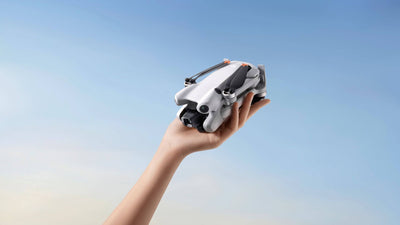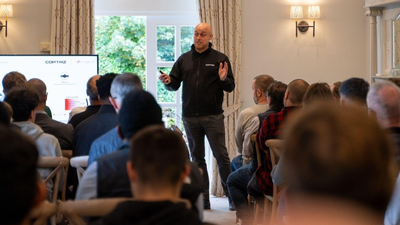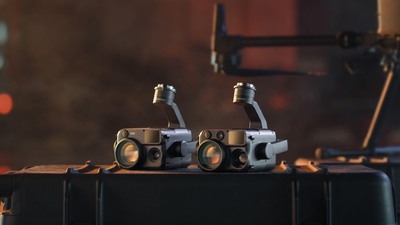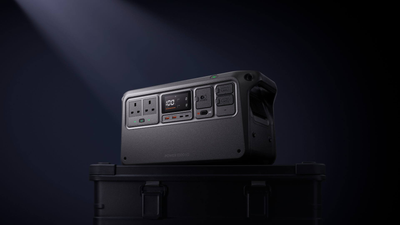Power 2000 Vs Power 1000: The Ultimate Comparison Guide
- by Stefan Gandhi
When you’re flying drones in the field, your gear is only as good as the power behind it. Whether you're filming for clients, mapping terrain or simply creating content, having a reliable portable power station can mean the difference between cutting-edge results and cutting out early. For drone users in the UK, DJI's Power 1000 and Power 2000 are serious contenders.
But which one really delivers for drone professionals and advanced hobbyists? Let’s break it down.
Battery capacity that scales with ambition
The Power 1000 delivers 1,024Wh of capacity, making it a capable all-rounder for most short-to-mid shoots. It powers high-draw devices like drone chargers, laptops and monitors with ease, while remaining portable enough to pack for day trips and quick field deployments.
The Power 2000, however, doubles the available capacity to 2,048Wh. This positions it as a serious workhorse for long shoots, high-output payloads or multi-drone operations. For commercial drone teams or serious creators managing full production setups, the Power 2000 provides headroom that eliminates compromise.
Output power to match your kit
Both units are built to handle demanding outputs. The Power 1000 offers a continuous 2,200W AC output with a peak up to 4,400W. This is ideal for powering charging hubs, lighting, field stations and other typical drone accessories. With two 140W USB-C ports, it also supports high-speed charging for drone batteries, tablets and more.
The Power 2000 steps things up to a 3,000W AC output, providing wider margins for energy-hungry operations like powering mobile editing suites or heating equipment in colder climates. It also comes with four USB-C and four USB-A ports, alongside four AC outlets, making it a genuine command centre for pro drone setups.
Fast charging, faster turnaround
Downtime is dead time, especially when you’re chasing light or working under tight production schedules. Both models feature DJI’s ultra-fast recharging system. The Power 1000 recharges from zero to 80% in just 50 minutes, with a full charge in around 70 minutes. This is ideal for morning reboots or mid-day recharges during a gear swap.
The Power 2000 delivers even quicker recovery. It reaches 80% in approximately 45 minutes and tops up fully in about 75 minutes. When paired with car or solar charging, it becomes a true off-grid solution that keeps pace with dynamic drone workflows.
Quiet performance that doesn't disrupt the shoot
Noise matters. Whether you're recording ambient sound or conducting interviews in the field, a noisy power station is a liability. Fortunately, both the Power 1000 and Power 2000 operate with minimal sound. The Power 1000 runs at just 23 decibels, virtually silent in most environments. The Power 2000, despite its larger output, only reaches 29 decibels. You get uninterrupted focus without compromise.
Rugged reliability and long-term value
Both stations use lithium iron phosphate (LFP) batteries rated for around 4,000 charge cycles. That equates to years of reliable use for drone professionals who operate frequently. These units are built with flame-retardant housings, advanced temperature sensors and internal protections that meet the rigours of field work.
The Power 1000 includes uninterruptible power supply (UPS) functionality, which is particularly valuable for protecting sensitive charging or data equipment during blackouts or voltage drops. The Power 2000, meanwhile, builds on this foundation with extended SDC ports and enhanced connectivity, offering greater modularity for large or evolving setups.
Expandable options for growing missions
If your power needs scale over time, the Power 1000 can be linked to DJI's Power Expansion Battery 2000. You can chain up to five expansion units, bringing your total capacity to 11,264Wh. This gives drone professionals future-proof flexibility without committing to the largest system up front.
The Power 2000 goes even further. You can stack up to ten expansion batteries for a maximum 22,528Wh. This makes it one of the most expandable portable systems in its class. For drone teams running operations across multiple days or off-grid scenarios, this scalability is a game-changer.
Which is right for your drone missions?
If you’re an advanced hobbyist or solo content creator needing fast recharging, reliable outputs and solid day-long coverage, the Power 1000 is more than sufficient. It delivers a balance of power and portability with pro-level features.
However, if your drone use involves multiple aircraft, extended filming days, data processing in the field or the need to power an entire workflow, the Power 2000 is the smarter investment. Its higher capacity, greater output range and modular scalability make it the ultimate backbone for drone-based operations.
To power your missions with confidence, shop the brand new DJI Power 2000 now at Coptrz’s online store here and experience the next level of drone energy solutions.




